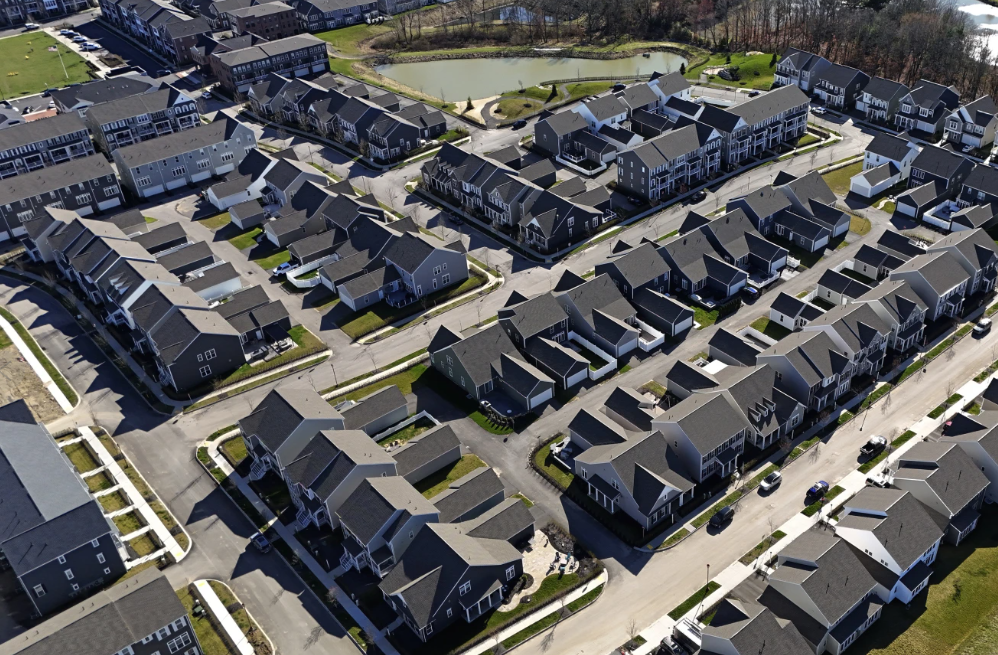Sales of previously owned U.S. homes slowed in March, marking a weak start to the spring homebuying season as high mortgage rates and rising home prices discouraged potential buyers.
Existing home sales fell 5.9% from February to a seasonally adjusted annual rate of 4.02 million units. This was the largest monthly decline since November 2022, when sales dropped by 6.7%. Sales were also down 2.4% compared to March of the previous year, falling short of the 4.12 million sales economists had anticipated.
The high cost of mortgages, which recently reached their highest level in two months, has become a significant hurdle for many prospective homebuyers, said Lawrence Yun, NAR’s chief economist. “Residential housing mobility, currently at historical lows, signals the troublesome possibility of less economic mobility for society,” Yun added.
Home prices continued to rise on an annual basis for the 21st consecutive month, though the increase was slower than before. The national median sales price reached $403,700 in March, a 2.7% increase from a year earlier, setting a new record for March, but marking the smallest annual rise since August.
The U.S. housing market has been in a slump since 2022 when mortgage rates started to rise from the historically low levels seen during the pandemic. Last year, sales of existing homes hit their lowest point in nearly 30 years. In 2024, mortgage rates hovered above 7% through January, and despite some slight drops, they have remained elevated. The rate on a 30-year mortgage recently climbed to 6.83%, its highest level in eight weeks, before easing slightly to 6.81%.
Although existing home sales fell in March, newly built homes saw a strong surge. Sales of new homes rose 7.4% from February and 6% compared to March of last year, as homebuilders offered more incentives to attract buyers. Builders have increasingly focused on smaller, more affordable homes, which helped lower the median sale price of newly built homes to $403,600.
Existing home sales, however, are typically influenced by higher-end properties, where more affluent buyers are more able to handle current mortgage rates or can afford to pay in cash. For instance, sales of homes priced at $1 million or higher rose 14% from a year earlier, while sales of homes priced between $100,000 and $250,000 decreased by 4%. This trend pushed up the median sales price for existing homes.
Despite a larger inventory of homes on the market for the spring season, March sales still decreased. There were 1.33 million unsold homes at the end of March, a jump of 8.1% from February and 19.8% from the previous year. This resulted in a 4-month supply, up from 3.2 months a year ago. A balanced market typically has a 5- to 6-month supply of homes.
“The increase in inventory hasn’t translated into more sales,” said Yun. One reason for this is that homes are taking longer to sell. On average, homes stayed on the market for 36 days before selling in March, up from 33 days the previous year.
Despite the increase in inventory and lower asking prices in many metropolitan areas, the housing market remains difficult for many Americans, particularly first-time buyers who lack the home equity gains that many other buyers have. Even though price growth is slowing, the prices have still increased significantly over the past five years, making it difficult for many people to afford a home.
“Uncertainty and anxiety will likely cloud the spring housing market,” said Lisa Sturtevant, chief economist at Bright MLS. “While some buyers will take advantage of more listings and negotiating room, others will hesitate to make a major decision amid the current uncertainties.”














